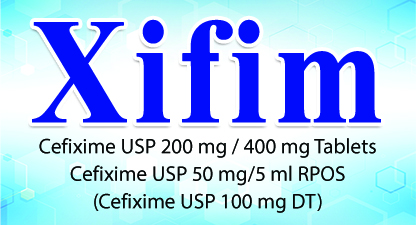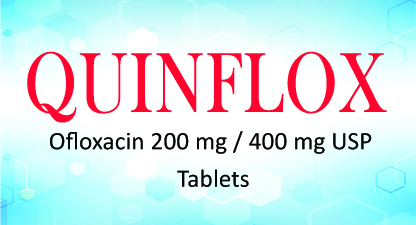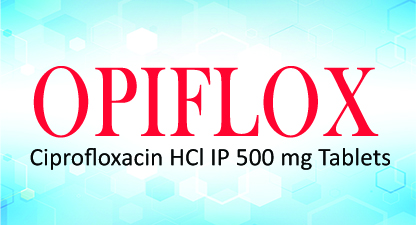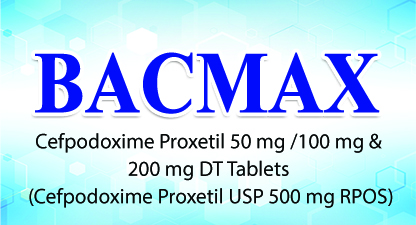LEFLOX
LEFLOX 250/500 (Levofloxacin) is a synthetic, broad spectrum, 3rd generation antibacterial agent. Chemically, Levofloxacin is a chiral fluorinated carboxy-quinolone.
- Categories : Antibiotics
- Share Now :
LEFLOX-250/500
Generic Name: Levofloxacin
Therapeutic Category: Antibiotics
Pharmacological Class: Fluoroquinolone
Composition: Leflox 250
Each film coated tablet contains Levofloxacin Hemihydrate IP equivalent to Levofloxacin 250 mg.
Leflox 500
Each film coated tablet contains Levofloxacin Hemihydrate IP equivalent to Levofloxacin 500 mg.
Pregnancy Category: C
Presentation: Available in the pack size as 10 tablets X 10 blisters
Mechanism of Action
Its mode of action depends on blocking of bacterial DNA replication by binding itself to an enzyme called DNA gyrase, which allows the untwisting required to replicate one DNA double helix into two. Ofloxacin acts on DNA gyrase and toposiomerase IV, enzymes which, like human topoisomerase, prevents the excessive supercoiling of DNA during replication or transcription. By inhibiting their function, the drug thereby inhibits normal cell division.
Indications
Susceptible bacterial infections including
- Acute bacterial sinusitis (ABS)
- Acute bacterial exacerbations of chronic bronchitis (ABECB)
- Nosocomial* or community-acquired pneumonia (CAP)
- Chronic bacterial prostatitis
- Skin and skin structure infections.
- Inhalation anthrax* (post-exposure): to reduce incidence or progression of disease
- Plague*
- Urinary Tract Infections (reserve for those who have no alternative treatment options).
Dosage
Route of administration: Oral
Community-Acquired Pneumonia
Adults: 500 mg once daily for 7-14 days.
Nosocomial Pneumonia: 750 mg once daily for 7-14 days.
Acute Bacterial Sinusitis: 500 mg once daily for 10-14 days.
Acute Bacterial Exacerbation of Chronic Bronchitis: 500 mg once daily for ≥7 days
Inhalational Anthrax (Post exposure therapy):
Children ≥ 6 months and <50 kg: 8 mg/kg twice a day for 60 days, beginning as soon as possible after exposure; individual dose not to exceed 250 mg
Children ≥ 6 months and >50 kg and Adults: 500 mg PO once daily for 60 days, beginning as soon as possible after exposure
Safety in children for treatment duration >14 days has not been established
Skin/Skin Structure Infection: 500 mg once daily for 7-10 days
Chronic Bacterial Prostatitis: 500 mg once daily for 28 days
Complicated Urinary Tract Infections & Acute Pyelonephritis: 250 mg once daily for 10 days
Uncomplicated Urinary Tract Infections: 250 mg once daily for 3 days
Plague:
Adult: 500 mg once daily for 10-14 days
Children ≥6 months and <50 kg: 8 mg/kg twice a day for 10-14 days; individual dose not to exceed 250 mg
Children ≥6 months and ≥50 kg and Adults: 500 mg PO/IV once daily for 10-14 days
Pharmacokinetics
Absorption: Bioavailability is approximately 99%.
Protein binding: Approximately 31%
Metabolism: Limited metabolism and drug is excreted unchanged
Route of elimination: Renal
Half-life: 6-8 hours
Adverse Effects
- Common: Nausea, headache, diarrhea, insomnia, constipation, dizziness, CNS stimulation, pruritus, rash, abdominal pain, tendinitis/tendon rupture.
- Rare: peripheral neuropathy, hepatotoxicity, photosensitivity, convulsions, torsades de pointes*, Clostridium difficile-associated diarrhea.
- Children: musculoskeletal disorders.
Contraindications
LEFLOX contraindicated in the following situations:
- Hypersensitivity to levofloxacin or any other member of quinolone class or to any of the components of the formulation.
- In patients with history of seizure disorders or other CNS diseases
Precautions
Risk of following is increased with administration of LEFLOX.
- Tendinitis* and Tendon Rupture
- Peripheral Neuropathy
- Central Nervous System Effects
- Exacerbation of Myasthenia Gravis*
Drug Interactions
- Antacids: Decreases absorption of antibiotic. Give levofloxacin at least 2 hours before or 6 hours after antacids.
- Anti-diabetics: May alter blood glucose levels. Monitor glucose levels closely.
- Iron salts, products containing zinc, sucralfate: May interfere with GI absorption of levofloxacin. Administer these drugs at least 2 hours apart.
- NSAIDs: May increase CNS stimulation. Monitor patient for seizure activity.
- Theophylline: Decreases theophylline clearance. Monitor theophylline levels.
- Warfarin and derivatives: Increases effect of oral anticoagulant with some fluoroquinolones.
*Terminologies:
Nosocomial: (of a disease) Originating in a hospital.







